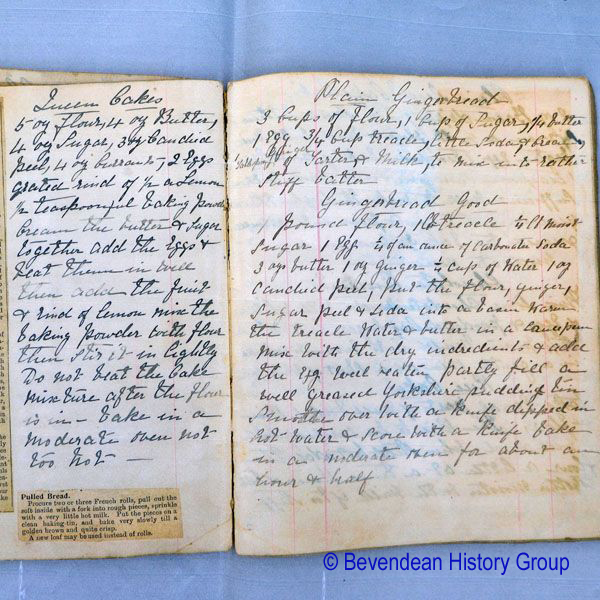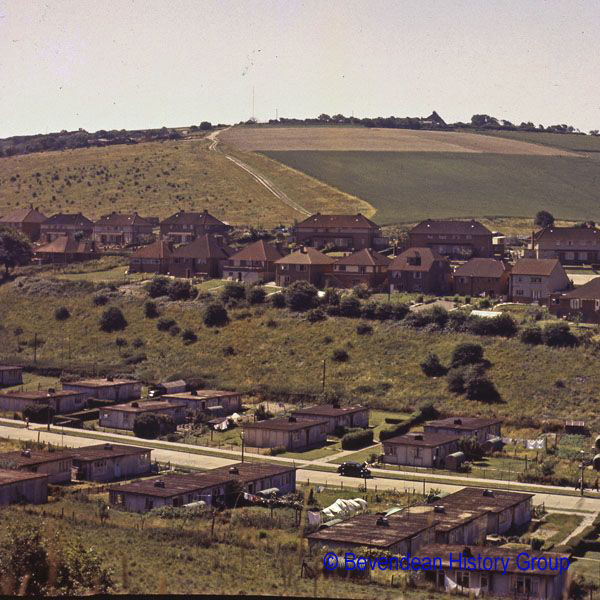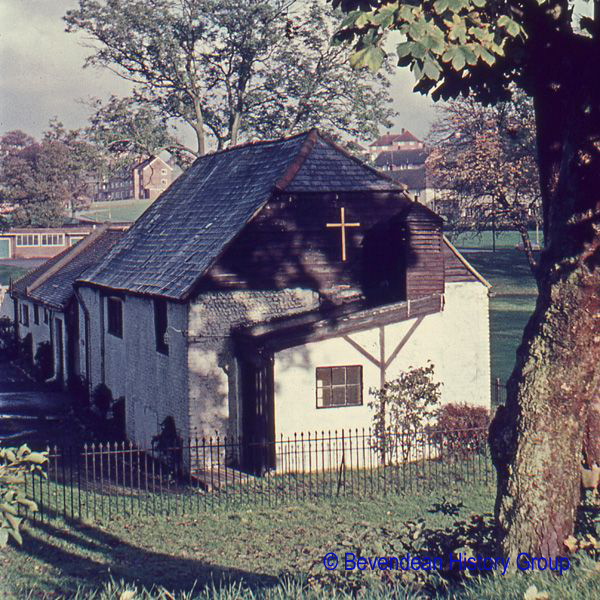
Bevendean History Project
The first two years of the project - continued9. 1920 Farmhouse Recipe Books from the Allcorn archives
Among the documents deposited in the Allcorn archive are some
handwritten recipe books which were Norman’s grandmothers. We have used some of
the recipes to make chutneys and jams for the Bevendean Fun Days. These have
proved very popular. Most of the recipes have been transcribed and can be seen
on our website.

10. Prefabs built in 1946 photographed in the 1950s
In the 1930s and early 1940s Brighton Corporation saw the need for new houses for people living in Brighton. Many of the houses in the central area were unfit, and described as slums and the programme of rebuilding at the edge of the town was started. The Second World War put a stop to this. However in 1944 it was decided to build a large estate of about 2000 houses in the Bevendean Valley which at the time was still farmland. Brighton Corporation had purchased the farm in 1913 and then re-let it as farmland. With the pressing need for housing after the war it was decided to start with prefabricated houses with a life expectancy of 15 years. The photograph here shows prefabricated bungalows in the foreground which survived until about 1961. On the Hill behind you can see a row of houses built by ex-servicemen after the war. It was the first scheme of its type anywhere in the country.

11. The Barn Church at Bevendean
Just one barn remained when the farm buildings were demolished and this was used as the local church for 10 years. The site has now been cleared and is a children’s play area, however in very dry weather you can see parch marks in the ground showing where the farm barns were. When the church opened the local newspapers reported that it was fitting to use a barn where cows had lived as the church remembering that Jesus had been born in a stable.

continued

10. Prefabs built in 1946 photographed in the 1950s
In the 1930s and early 1940s Brighton Corporation saw the need for new houses for people living in Brighton. Many of the houses in the central area were unfit, and described as slums and the programme of rebuilding at the edge of the town was started. The Second World War put a stop to this. However in 1944 it was decided to build a large estate of about 2000 houses in the Bevendean Valley which at the time was still farmland. Brighton Corporation had purchased the farm in 1913 and then re-let it as farmland. With the pressing need for housing after the war it was decided to start with prefabricated houses with a life expectancy of 15 years. The photograph here shows prefabricated bungalows in the foreground which survived until about 1961. On the Hill behind you can see a row of houses built by ex-servicemen after the war. It was the first scheme of its type anywhere in the country.

11. The Barn Church at Bevendean
Just one barn remained when the farm buildings were demolished and this was used as the local church for 10 years. The site has now been cleared and is a children’s play area, however in very dry weather you can see parch marks in the ground showing where the farm barns were. When the church opened the local newspapers reported that it was fitting to use a barn where cows had lived as the church remembering that Jesus had been born in a stable.

continued
